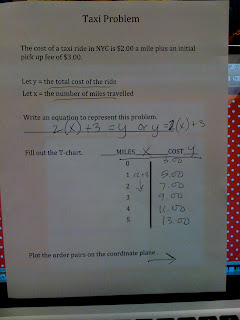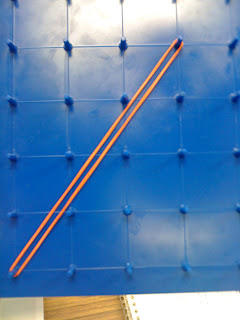There are 3 types of lines:
- Parallel lines - the slope for each line is the same. There is no common solution. "My son and I will never be the same age".
- 1 intersection - intersect at exactly one point. The lines will never intersect again. There is 1 common solution. The point makes the equation for both lines true. "My dog and I will eventually be at the same age because we age at different rates."
- Infinite intersection lines - all intersecting points are common. "My identical twin and I will always be the same age."
Solving Systems by Graphing:
 |
| The lines intersect at (4,10) The solution to this system is x = 4, y = 10 |
Another system to solve:
 |
| The lines intersect at (2,4) Solution to this system is x = 2, y = 10 |
**Sometimes the systems are not in slope intercept form. So, in that case you need get it there.**
Example:
 |
| We used a graphing calculator to solve these problems. We had to find the intersection and in what quadrant. #1 is (-1,2) Quadrant 3 #7 is (-1,3) Quadrant 2 #10 is (3,8) Quadrant 1 Free online Graphing Calculator you can use the above link to solve these problems. |
 |
This is a problem we solved, but I used the online graphic calculator |
Write the equations in slope intercept form.
(don't solve the systems)



































